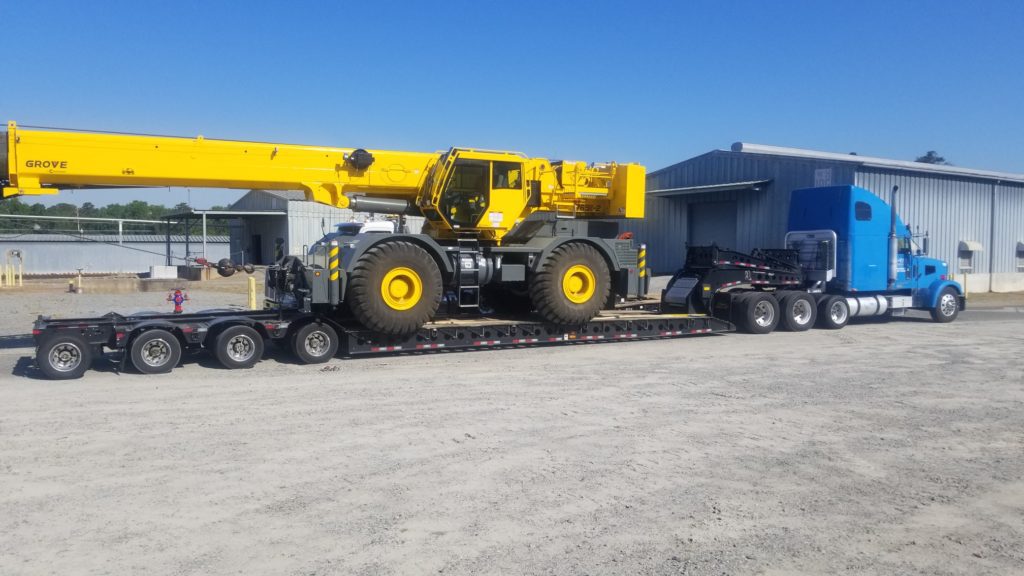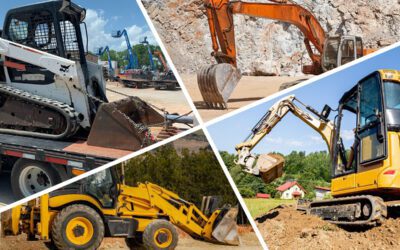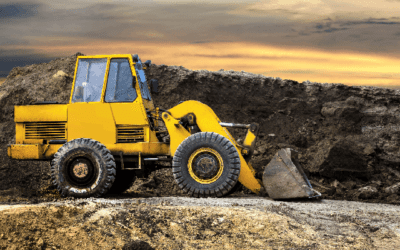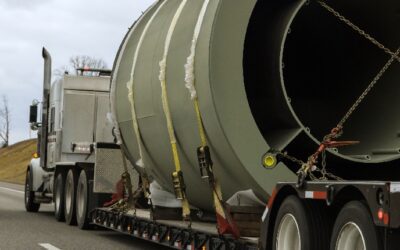What Is Lowboy Trucking?
Even if you’re unfamiliar with trucking and its terminology, you’ve likely heard of lowboy trucking. And suppose your company needs to move construction equipment, heavy machinery, or oversized loads with height restrictions. In that case, you will be introduced to lowboy transport services to help you make it happen.
Depending on the transport company’s location, Lowboy trailers are also known as double drop, low loader, or low-bed. But no matter what you call them, they are all semi-trailers with two drop decks. One drop is behind the gooseneck, and the other is in front of the wheels.
Lowboy Trailer Specs
Two-axle lowboy flatbed trailers have a maximum weight limit of 40,000 pounds and are rated for freight measuring 11.5 feet tall, assuming the lowest deck is two feet from the ground. Compare that to a standard flatbed trailer deck sitting five feet off the ground, and it’s easy to see why lowboy shipping is so popular among heavy haulers.
Low boy trailers are available in two main types: the removable gooseneck (RGN trailers) and the fixed neck model. RGN trailers provide a ramp for quick loading, a significant advantage since it eliminates the need for a crane or forklift to load the lowboy freight. However, lighter fixed necks allow companies to carry higher load capacities.
What are the Benefits of Lowboy Trailer Transport?
Lowboy hauling is beneficial for moving heavy loads in various industries, mainly when freight height is an issue. Tractors, bulldozers, and excavators are some of the heavy equipment that lowboy trucking companies transport worldwide.
Lowboy trailers can move large machines that aren’t road rated, even though they have wheels, such as bulldozers, backhoes, and dump trucks. They’re designed with two drops on the trailer, allowing taller equipment that cannot be disassembled to move through low-clearance areas.
Lowboy shipping companies can transport oversized equipment without the hassle of additional permits. They can increase the number of axles for additional weight capacity and carry taller freight without height permits.

What are the Differences Among the Three Main Types of Trailers: Flatbed, Step Deck, and Lowboy
Heavy haul trucking typically occurs on one of these trailers, and the freight shipping you require will determine which of these your shipping company recommends.
Standard Flatbed Trailer
Flatbed trailers are versatile and can provide shipping services for steel, lumber, and machinery such as dozers. Their open back and sides make loading and unloading simple when using a forklift or crane. It is also ideal for hauling oversized freight with the required permits obtained, and the proper routes followed.
The maximum dimensions for height and width of any flatbed freight are 8 feet, 6 inches. The flatbed trailer deck rests 5 feet off the ground and can haul a maximum capacity of 48,000 pounds.
Step Deck Trailer
Step-deck trailers (a.k.a. drop-deck trailers) are used as an alternative to the flatbed trailer when the freight height is a factor. Designed with an upper deck at 5 feet and a rear section at 3 feet, 6 inches, step deck trailers can haul loads of up to 10 feet and 2 inches in height before being considered over-dimensional.
Where flatbeds are typically 5 feet off the ground, drop deck trailers drop after 10 feet and remain at that 3 feet 6-inch height for 43 feet, enabling them to transport oversized loads up to 10 feet 2 inches tall.
Lowboy Trailers
As mentioned, the double drop trailer is much closer to the ground than any other trailer type. Their proximity to the ground, typically 2 feet, is made possible by two drops: one right behind the gooseneck and another before the back wheels.
Lowboys have a weight limit ranging between 40,000-80,000 pounds, depending on the number of axles. However, because of their design, double drop trailers do not have the length capacity of the step deck, being restricted by the “well space” to 29 feet. However, the maximum legal height of any freight carried by a lowboy trailer is 11 feet, 6 inches, making them the ideal solution for companies hauling large construction equipment and heavy machinery moving from job site to job site.
Titan Worldwide Provides Reliable Lowboy Trailer Shipping
Titan has the solution for whatever type of heavy haul trucking services you require. We will connect you with one of our experienced logistics agents to arrange the details of your lowboy transportation services. From choosing the appropriate transportation for your freight to confirming that your equipment has reached its destination safely and on time, our team of experts will be your strategic partners throughout the journey.
In addition, we will provide a professional driver, plan the route, apply for any permits, and take care of the paperwork. And troubleshoot any issues during the trip. Using proprietary execution models, Titan Worldwide’s logistics experts can determine how your heavy-hauling project can come in on budget while helping to mitigate risk.
You have enough to do running your business, so let us provide innovative logistics and heavy haul trucking services for you. You can be confident when you choose Titan!




